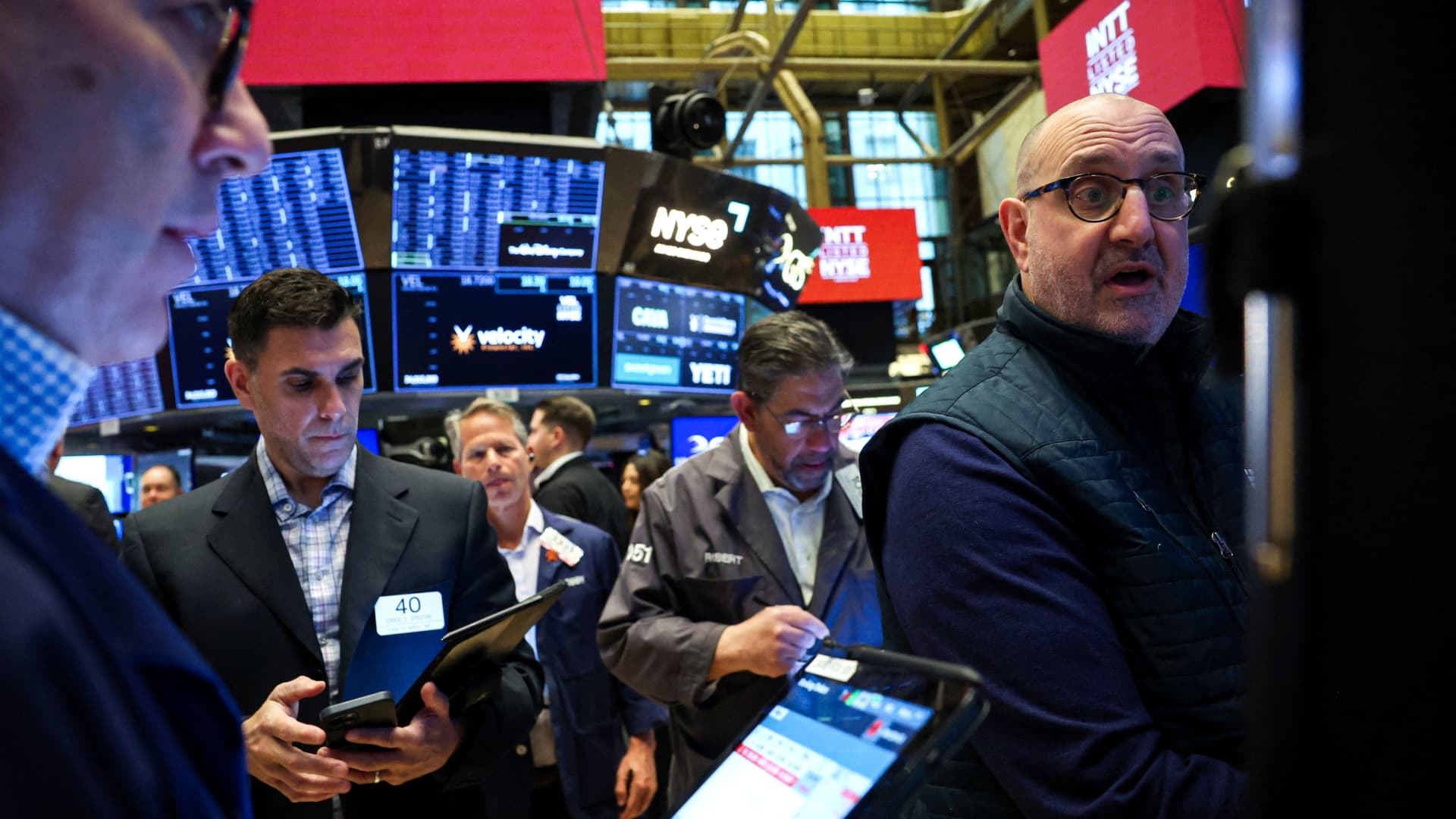Wall Street is bracing for “Liberation Day” on April 2, when investors are hoping that any clarity around President Donald Trump’s tariffs will finally give an agitated market a path forward. The stock market has been on a wild ride in 2025, as a ream of policy changes from the White House has left investors confused as to what to buy or sell. By the end of trading on Monday, when the quarter ends, the S & P 500 will have managed to dip into correction territory — just 22 days after reaching all-time highs — before recouping some of its losses. The broader market index was last more than 9% off its peak and posted its fifth weekly decline in six weeks. Market observers expect that any sort of finality that comes April 2 will give the stock market enough of the certainty it needs for a short-term boost. That said, many worry there will be no forthcoming resolution. What’s more, they fear the severity of tariffs, as well as any of the economic repercussions, could remain a long-term overhang for equities. “If you don’t get much more tariff actions, and there’s some resolution of uncertainty, you could see a bit of a temporary relief rally,” said Brett Ryan, senior U.S. economist at Deutsche Bank Securities. “But I think that there’s going to be selling into it, because unless you’re backing down from tariffs, this is a negative, no matter what.” The stakes are heightened as tariffs are just one piece of a larger economic picture that is becoming more grim as of late, especially with the federal budget deadline also looming next month. While household balance sheets remain strong, weakening consumer sentiment has investors fearful the U.S. is headed for a slowdown, at a minimum, and a recession, at worst. “The probability of a recession almost certainly has gone up,” said Chris Marangi, co-CIO of value at Gabelli Funds. “I’m not sure that’s been fully reflected yet in prices.” How severe will tariffs be? Perhaps most important for investors will be what results of the tariff threats against Mexico and Canada, which have raised eyebrows as the USMCA trade agreement between the three major trading partners was brokered during the first Trump administration. A diminishing of trade relations would have far-reaching consequences for all three countries and add to fears that the current Trump administration sees tariffs more as a revenue-raising tool than one to negotiate a better deal. “My worst fear would be that there is no intention to renegotiate the USMCA, or to improve it,” Deutsche Bank Securities’ Ryan said. “The worst fear is that their intention is actually to have no more USMCA.” The severity of the tariffs could also determine the outlook for both the economy and the market. The Tax Foundation estimates the average tariff rate for all imports will rise to 8.4% in 2025, from 2.5% in 2024. That would be the highest average rate going back to 1946. Ryan expects the current tariff rate is higher, at 10.5%, and thinks it could go over 16% if the Trump administration takes a maximalist approach to trade. That would bring the tariff rate close to Depression-era levels, he said, to 1938. That could further weaken the growth outlook, and raise inflation expectations, at a time when fears of stagflation are percolating on Wall Street. “All of this is negative, okay?” said Ryan. “None of this is positive.” More fear than greed The on-again-off-again nature of recent tariff announcements is important in part because neither consumers nor corporations can plan for the future. Neither can investors. Some on the Street such as Fundstrat’s Tom Lee think stocks can stage a comeback rally following April 2, with the Magnificent Seven stocks possibly resuming their former leadership. Last week, 3Fourteen’s Warren Pies said it may be worthwhile for investors who have an underweight equity exposure to bring it up to equal weight, to start taking an ” offensive mindset ” in April. But plenty of others are positioning themselves defensively ahead of the announcement. Fixed income is becoming more attractive, along with gold and other alternative assets. By itself, gold has soared past $3,000 an ounce, on Friday notching its 18th record high of 2025 amid concerns of a global trade war. Meanwhile, confidence in the bull case for U.S. equities is taking a hit . This week, an online survey conducted by Allianz Life Insurance found that 51% of respondents “worry that another big market crash is on the horizon,” up from 46% previously. On Friday, Bank of America Securities’ Savita Subramanian said “new US equity bear cases [are] emerging,” citing, among other things, “policy uncertainty amid higher government debt.” Among big firms, Barclays’ strategist Venu Krishna is the latest to cut his 2025 S & P 500 target to 5,900 from 6,600 , meaning little to no upside from where the benchmark started the year. His is also the lowest outlook among those in a CNBC Pro market strategist survey. Gabelli Funds’ Marangi outlined the criteria for finding buying opportunities in this environment: “We’re obviously trying to gauge how aggressive to be in deploying capital, and trying to find companies that are relatively immune to what may be going on, or trying to find companies that maybe have overreacted to some of the news that comes out of Washington.” Elsewhere, at a recent media roundtable, Connor Fitzgerald, fixed income portfolio manager at Wellington Management, put it succinctly when he was asked to take a view on equities: “Yeah. I don’t love stocks right now.” Week ahead calendar All times ET. Monday March 31 9:45 a.m. Chicago PMI (March) 10 a.m. Dallas Fed Index (March) Tuesday April 1 9:45 a.m. S & P PMI Manufacturing final (March) 10 a.m. Construction Spending (February) 10 a.m. ISM Manufacturing (March) 10 a.m. JOLTS Job Openings (February) Wednesday April 2 8:15 a.m. ADP Employment Survey (March) 10 a.m. Durable Orders final (February) 10 a.m. Factory Orders (February) 10 a.m. New York Federal Reserve Bank Deputy SOMA Manager Julie Remache speaks at seminar in Monetary and Fiscal Policy in Vanderbilt University, Nashville Thursday April 3 8:30 a.m. Continuing Jobless Claims (03/22) 8:30 a.m. Initial Claims (03/29) 8:30 a.m. Trade Balance (February) 9:45 a.m. PMI Composite final (March) 9:45 a.m. S & P PMI Services final (March) 10 a.m. ISM Services PMI (March) Friday April 4 8:30 a.m. Hourly Earnings preliminary (March) 8:30 a.m. Average Workweek preliminary (March) 8:30 a.m. Manufacturing Payrolls (March) 8:30 a.m. Nonfarm Payrolls (March) 8:30 a.m. Participation Rate (March) 8:30 a.m. Private Nonfarm Payrolls (March) 8:30 a.m. Unemployment Rate (March) 9 a.m. New York Federal Reserve Bank Director of Research Kartik Athreya speaks at 2025 New York Fed Innovation Conference, New York
Investors limp into next week’s ‘Liberation Day’ hoping for clarity on U.S. tariffs


